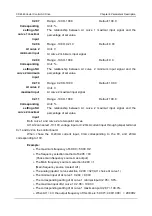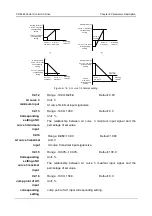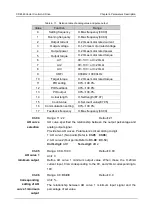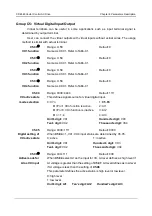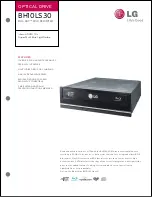
CDE360 Vector Control AC Drive Chapter 6 Parameters Description
Table 6- 13 the default value and range of overvoltage stall protective voltage
Volt Grade
default
Range
Single-phase 220V
350 V
330V - 380V
Three-phase 220V
350 V
330V - 380V
Three-phase 380V
680 V
630V - 770V
Three-phase 480V
750 V
660V - 870V
Three-phase 690V
1100 V
1050V - 1150V
Three-phase 1140V
2100 V
1900V - 2300V
d0.15
Range: 00 ~ 11
Default: 00
Stall control
mode
If the utility supply voltage declines, the output frequency will decrease to
maintain a constant motor V/f relation. In some applications the motor is
required to operate at the desired set speed, regardless of supply line
voltage variations. In this situation, the under voltage control is disable,
the frequency will not decrease as the utility supply voltage decreases.
This could lead to under exciting the motor, resulting in a large increase in
motor current during under voltage conditions.
Unit's digit:
Under voltage control enable 0: Disabled 1: Enabled
Ten's digit:
Overvoltage and overcurrent stall control
0:Auto limit of acceleration and deceleration step
1:Operating frequency automatic control
d0.16
①
Range: 0 ~ 9
Default: 0
V/f curve
selection
Voltage / frequency curve selection.
0: linear
The voltage of the motor changes linearly with the frequency in the
constant flux area from 0 Hz to the motor rated frequency where the
rated voltage is supplied to the motor. Linear V/f curve should be used in
constant torque applications.
1: multi-point V/f
User can program multi-point V/f based on the needs of application. See
Fig.6-D2
2: 1.2-power V/F
3: 1.4-power V/F
4: 1.6-power V/F
5: 1.8-power V/F
6: squared V/f
Squared V/f curve can be used in applications where torque demand of
the load is proportional to the square of the speed, e.g in centrifugal fans
and pumps.

